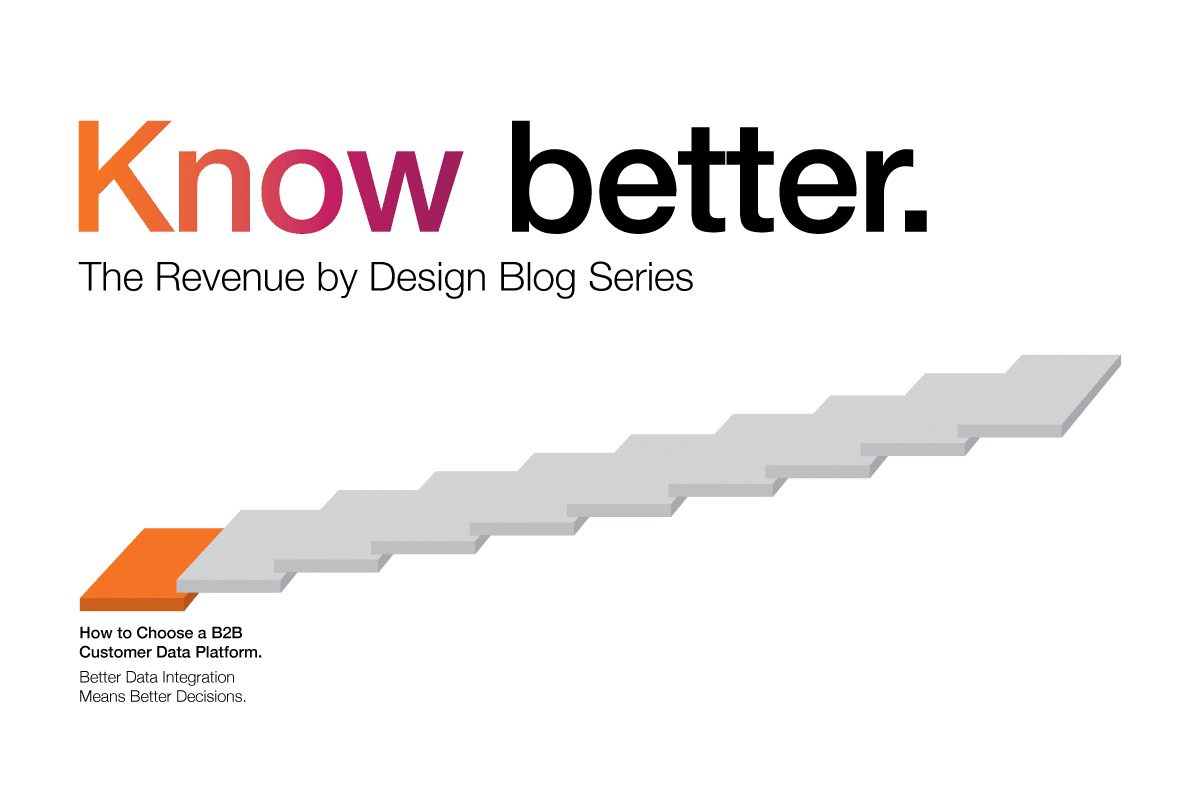Complete buyer profiles at the account, buying center and contact level are critical. This starts with leveraging your ongoing 1st party data with a variety of 3rd party data to create profiles (or a full buyer data graph) — combining what you know about the customer with what the world knows about the customer — for better lead to account matching, classification/scoring, context and insights. And buying signals come from all kinds of systems with data that can be in all kinds of formats.
Integrating & unifying numerous types of variably-sourced data on your own is extremely tedious, time-consuming, and error-prone. Luckily for marketing and sales operations professionals, implementing a Customer Data Platform (CDP) turns that cumbersome process into the first of many automated steps in your buyer’s journey.
Of course all CDPs are not the same. So you need a way to determine which best fits your needs. Check out the latest from Forrester, who recently published The Forrester New Wave™: B2B Standalone CDPs, Q4, 2021.
In Forrester’s evaluation of 14 leading B2B CDP companies, Forrester considers several areas of capability to determine and compare their individual data integration and unification qualifications. Forrester takes into account integration capabilities (deduping, cleansing, normalization, lead-to-account matching, etc), integration processes (workflow visualization, data ingestion, frequency, customization, etc), and supported data sources/types (1st and 3rd party integration, CRM, marketing automation, structured/unstructured, data sources/providers, firmographics, technographics, intent, etc). While Data Integration & Unification is just one of 10 variables Forrester uses to rank B2B CDPs, let’s look at how Leadspace compares and go through some of Leadspace’s Data Integration & Unification capabilities.
We’re proud to say that for Data Integration & Unification, Forrester differentiated Leadspace’s Buyer Data Platform as a leader among standalone B2B CDPs!
So let’s get into the details. Our platform can cluster, unify, link, and dedupe company & person identities originating from any data source. Using primarily proprietary AI-based classifiers, we fully unify a record while maintaining data integrity and custom business rules including validation and normalization. We offer real-time, on-demand, and scheduled sync of unified profiles for data management objectives. Profiles can be synced to any activation channel.
The platform is data agnostic and ingests both structured and unstructured 1st and 3rd party data in the backend as well as through our Studio (our self-service UI). Integrations are supported via native apps, REST API, and SFTP. Unification logic is customizable by our clients via the UI and customer service requests.
We support the typical first-party sources (and more!) including CRM, ERP, web analytics, MAP, product usage, and CSX data. ~30 third-party sources provide firmographics, demographics, technographic, and intent data. Sources can be provided upon request. We offer both real-time, scheduled and on-demand ingestion, unification and segmentation workflows for data management. The segments and profiles are persisted and can be synced to any channel for activation.
Lead to account matching is sometimes an overlooked capability in CDPs. Depending upon the volume, the complexity of routing and the response time required in your GTM system, small errors can mean a lot of distraction or lost deals by your reps. After working with lots of large B2B accounts, we’ve found that not all profiles require the same number of sources for complete profiles used in matching, routing and scoring. For account profiles, we’ve found that 80% of records have between three and eight data sources. And for people or contacts, nearly 95% of records have 8-10 data sources. So it’s important to consider the ability to normalize all of that data into a coherent profile. Our multisource matching does just this!
Finally we take the data and integrate it with our B2B Buyer Data Graph. This creates a customer-specific B2B Graph with multi-source validation — 70M+ companies, 240M+ Buying Centers, 280M people from 30+ curated third party data sources and a broad array of first party data. This is one of the unique capabilities that differentiates Leadspace from other B2B CDPs.
As you can see, there is a lot to consider in Data Integration and Unification. Simply put, Leadspace can handle your buyer data integration & unification needs and beyond – just ask Forrester! To learn more about the benefits of implementing a CDP, and to see how Leadspace compares to other B2B CDPs in all 10 evaluated categories (and is ranked overall in the Forrester Wave), check out The Forrester New Wave™: B2B Standalone CDPs, Q4, 2021.
In next week’s blog we will tackle the next selection category — Data Sources & Types.
